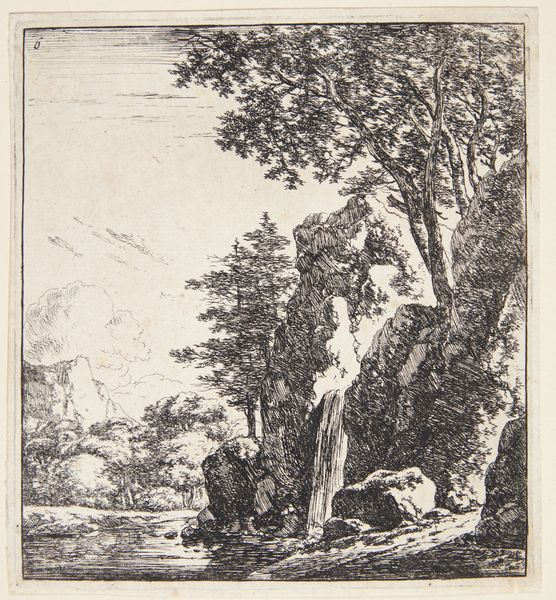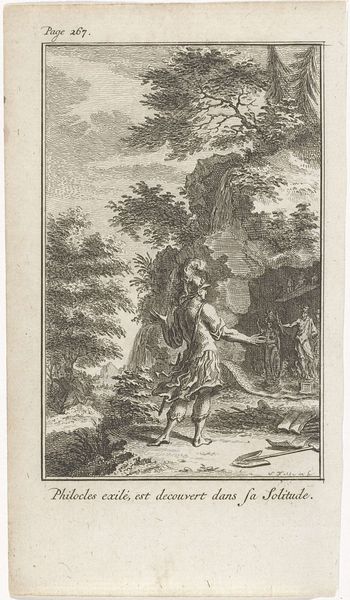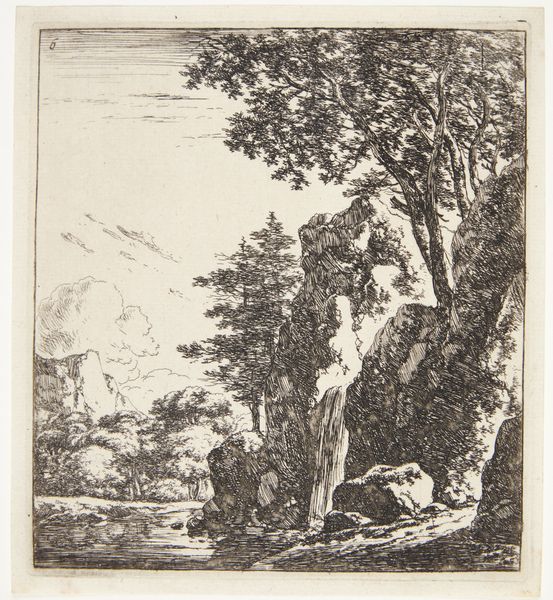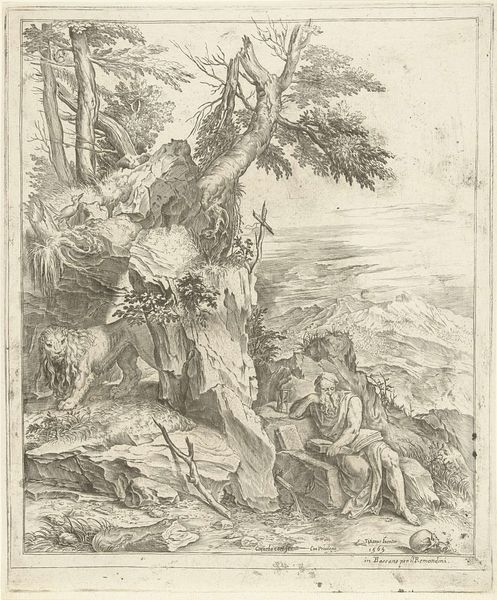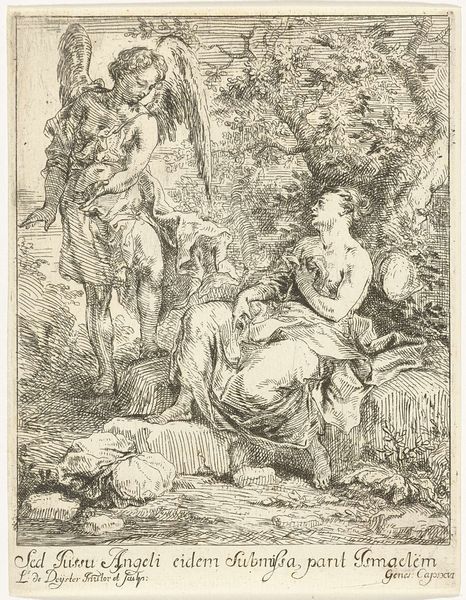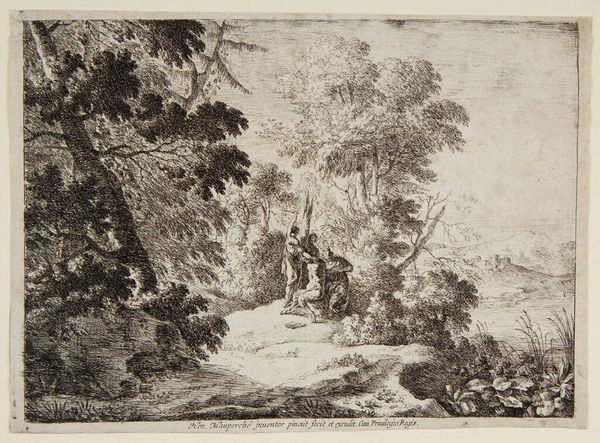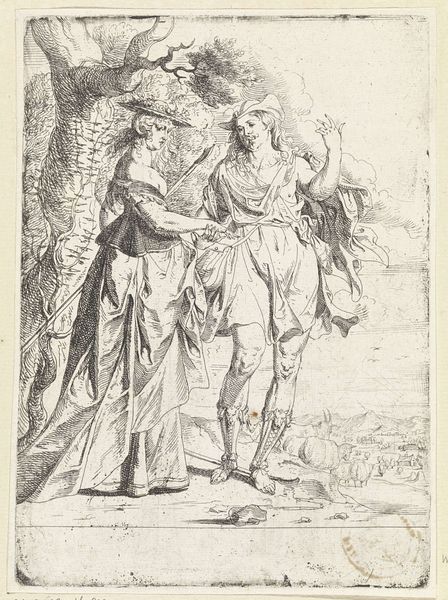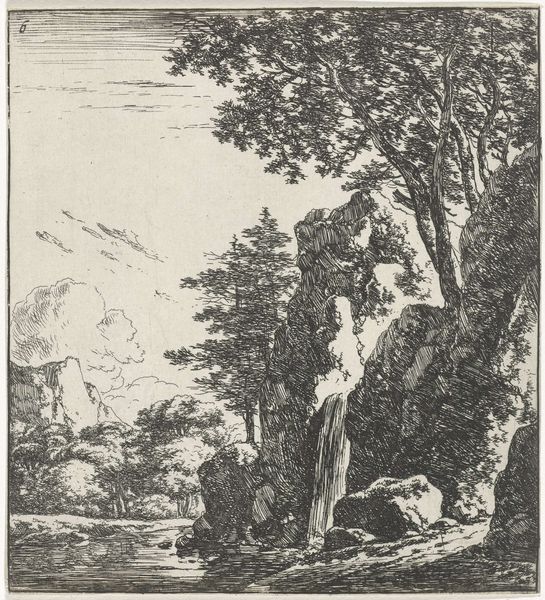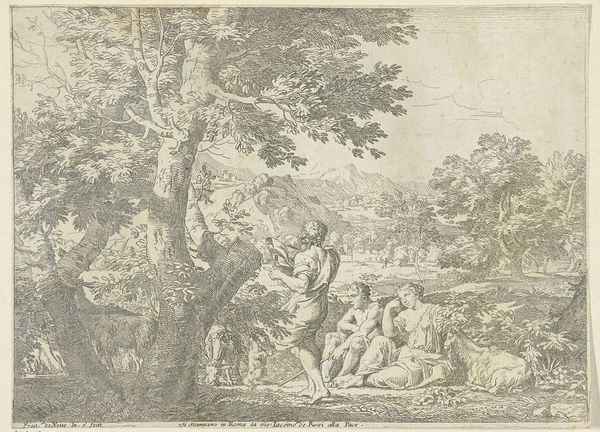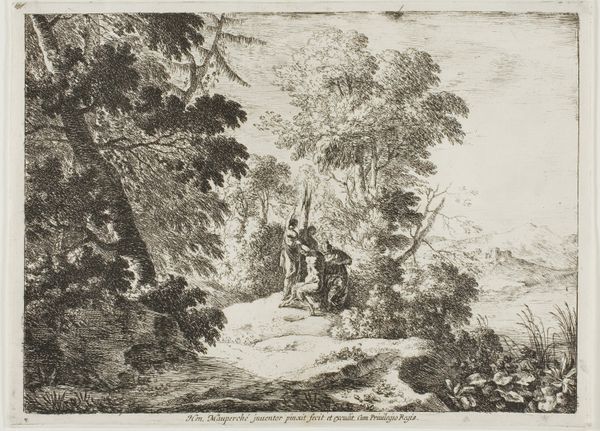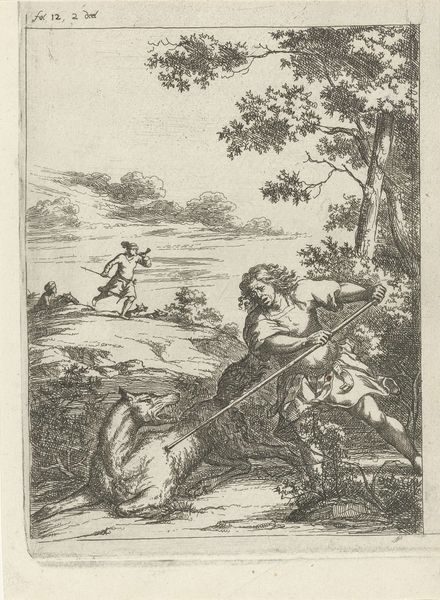
drawing, ink, pen
#
drawing
#
narrative-art
#
baroque
#
landscape
#
charcoal drawing
#
figuration
#
ink
#
pencil drawing
#
pen
Copyright: Public Domain: Artvee
Editor: This drawing, "The Prodigal Son Kneeling Repentant among Swine," by Salvator Rosa, was created sometime between 1615 and 1673, using pen, ink and charcoal. There’s something deeply unsettling about it. The stark contrast between the man’s desperate posture and the oblivious nature of the pigs is striking. What social commentary do you think Rosa is trying to make here? Curator: What immediately grabs me is Rosa’s deliberate staging of vulnerability within a landscape of both deprivation and abundance. The "prodigal son" story, of course, centers around repentance, but what does it mean to visualize it this way? Rosa made this drawing in a period marked by the consolidation of power structures. Consider who occupies spaces of both privilege and degradation. How does he challenge ideas around the concept of family, religion, forgiveness and social mobility at this time? Editor: So, you're saying Rosa isn’t just illustrating a biblical story, but critiquing the power dynamics of 17th-century society? The son's disheveled appearance next to those woods suggests that he is trapped in a specific location, in the margins, where repentance is difficult and requires self abasement? Curator: Precisely. Notice the pigs - traditionally seen as unclean. By positioning the son among them, what’s Rosa trying to communicate about societal judgments and who gets deemed "worthy" of redemption? Editor: I see it now. The drawing serves as a harsh indictment of social stigmas and the limited pathways to reintegration available to the marginalized during that period. It gives visual form to social realities. Curator: And that’s the enduring power of Rosa's art: it uses familiar narratives to dissect the uncomfortable realities of power, poverty, and social exclusion. I learned so much as well, because it really challenged what I understood about that story. Editor: Absolutely. It reframes the story in a new and profoundly critical light, connecting history to present struggles around social injustice and inequality.
Comments
No comments
Be the first to comment and join the conversation on the ultimate creative platform.
